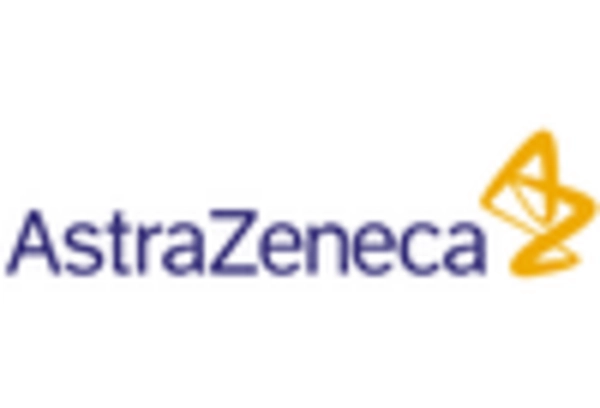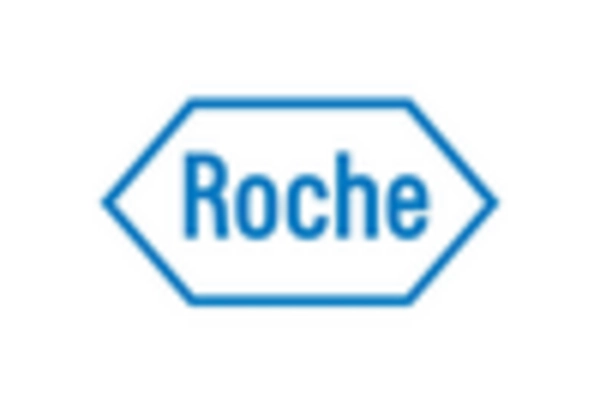Rising Incidence of Leigh Syndrome
The rising incidence of Leigh syndrome in the GCC region critically influences the leigh syndrome treatment market. Epidemiological studies suggest that the prevalence of this rare genetic disorder may be increasing, prompting healthcare systems to address the growing need for effective treatments. As more cases are diagnosed, there is likely to be a corresponding increase in demand for specialized medical care and therapeutic interventions. This trend may also lead to greater investment in research aimed at understanding the genetic and environmental factors contributing to the condition. Furthermore, the increasing number of diagnosed cases could drive healthcare providers to seek out innovative treatment solutions, thereby expanding the market. The implications of this rising incidence are profound, as they may shape the future landscape of care for patients with Leigh syndrome.
Advancements in Treatment Technologies
Technological advancements in the field of medicine are significantly impacting the leigh syndrome-treatment market. Innovations in gene therapy, enzyme replacement therapy, and mitochondrial-targeted treatments are emerging as potential solutions for managing this complex disorder. The GCC region is witnessing an influx of research initiatives aimed at developing novel therapies that address the underlying genetic causes of Leigh syndrome. For instance, recent studies have indicated that certain gene therapies may improve mitochondrial function, which is critical for patients with this condition. As these technologies continue to evolve, they are likely to attract investment and interest from pharmaceutical companies, thereby expanding the treatment options available in the market. The potential for breakthrough therapies could lead to a more competitive landscape, ultimately benefiting patients and healthcare providers alike.
Increasing Awareness of Leigh Syndrome
The growing awareness of Leigh syndrome among healthcare professionals and the general public is a crucial driver for the leigh syndrome-treatment market. Educational initiatives and campaigns are being implemented across the GCC to inform about the symptoms, diagnosis, and treatment options available. This heightened awareness is likely to lead to earlier diagnosis and intervention, which can improve patient outcomes. As more families become informed about the condition, the demand for effective treatments is expected to rise. Furthermore, the GCC region has seen a notable increase in the number of support groups and advocacy organizations, which play a vital role in disseminating information. This trend may contribute to a more robust market for treatments, as patients and caregivers seek out available therapies and clinical trials.
Government Support and Funding Initiatives
Government support plays a pivotal role in shaping the leigh syndrome-treatment market. In the GCC, various health ministries are increasingly recognizing the need for funding initiatives aimed at rare diseases, including Leigh syndrome. This support may manifest in the form of grants for research, subsidies for treatment costs, and the establishment of specialized healthcare facilities. For example, recent allocations of funding for rare disease research have been reported, which could enhance the development of targeted therapies. Additionally, public health policies that prioritize rare diseases may lead to improved access to treatments for affected individuals. As governments continue to invest in healthcare infrastructure, the leigh syndrome-treatment market is likely to benefit from enhanced resources and support systems.
Collaboration Between Research Institutions and Pharmaceutical Companies
Collaborative efforts between research institutions and pharmaceutical companies are emerging as a significant driver in the leigh syndrome-treatment market. In the GCC, partnerships are being formed to accelerate the development of new therapies and clinical trials. These collaborations often leverage the expertise of academic researchers alongside the resources of pharmaceutical firms, creating a synergistic effect that can lead to faster innovation. For instance, joint ventures may focus on exploring novel drug formulations or delivery methods that specifically target the needs of Leigh syndrome patients. Such partnerships not only enhance the research landscape but also facilitate the sharing of knowledge and resources, which can ultimately lead to more effective treatment options. The potential for successful collaborations may encourage further investment in the market.

















Leave a Comment